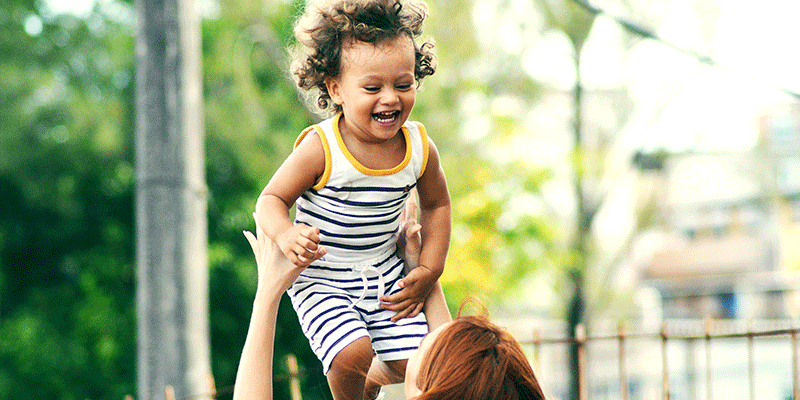
Lying in your arms or in the crib beside you, your newborn makes a tight little bundle. Just as he did in the womb, he’ll keep his arms and legs bent up close to his body and his fingers tightly clenched, although you should be able to straighten them gently with your hands. His feet will naturally curve inward. It may take several weeks for his body to unfold from this preferred fetal position.
You’ll have to wait even longer for him to make the cooing or babbling sounds we generally think of as “baby talk.” However, from the beginning he’ll be very noisy. Besides crying when something is wrong, he’ll have a wide variety of grunts, squeaks, sighs, sneezes, and hiccups. (You may even remember the hiccups from pregnancy!) Most of these sounds, just like his sudden movements, are reactions to disturbances around him; a shrill sound or a strong odor may be all it takes for him to jump or cry.
These reactions, as well as more subtle ones, are signs of how well your baby’s senses are functioning at birth. After all those months in the womb, he’ll quickly recognize his mother’s voice (and possibly his father’s, as well). If you play soothing music, he may become quiet as he listens or he’ll move gently in time with it.
By using the senses of smell and taste, your newborn is able to distinguish breast-milk from any other liquid. Born with a sweet tooth, he’ll prefer sugar water to plain water and will wrinkle his nose at sour or bitter scents and tastes.
Your baby’s vision will be best within an 8 to 12 inch (20.3 to 30.5 cm) range, which means he can see your face perfectly as you hold and feed him. But when you are farther away, his eyes may wander, giving him a cross-eyed appearance. During the first couple of months of his life, don’t worry about this. As his eye muscles mature and his vision improves, both eyes will remain focused on the same thing at the same time. This usually occurs between two and three months of age. If it does not, bring it to the attention of your baby’s pediatrician.
While your infant will be able to distinguish light from dark at birth, he will not yet see the full range of colors. While young infants who are shown a pattern of black and white or sharply contrasting colors may study them with interest, they are not likely to respond at all when shown a picture with lots of closely related colors.
Perhaps the newborn’s most important sense is touch. After months of being bathed in warm fluid in the womb, your baby will now be exposed to all sorts of new sensations – some harsh, some wonderfully comforting. While he may cringe at a sudden gust of cold air, he’ll love the feel of a soft blanket and the warmth of your arms around him. Holding your baby will give him as much pleasure as it does you. It will give him a sense of security and comfort, and it will tell him he is loved. Research shows that close emotional bonding actually will promote his growth and development.
Last Updated 8/1/2009
Source Caring for Your Baby and Young Child: Birth to Age 5 (Copyright © 2009 American Academy of Pediatrics)
The information contained on this Web site should not be used as a substitute for the medical care and advice of your pediatrician. There may be variations in treatment that your pediatrician may recommend based on individual facts and circumstances.






